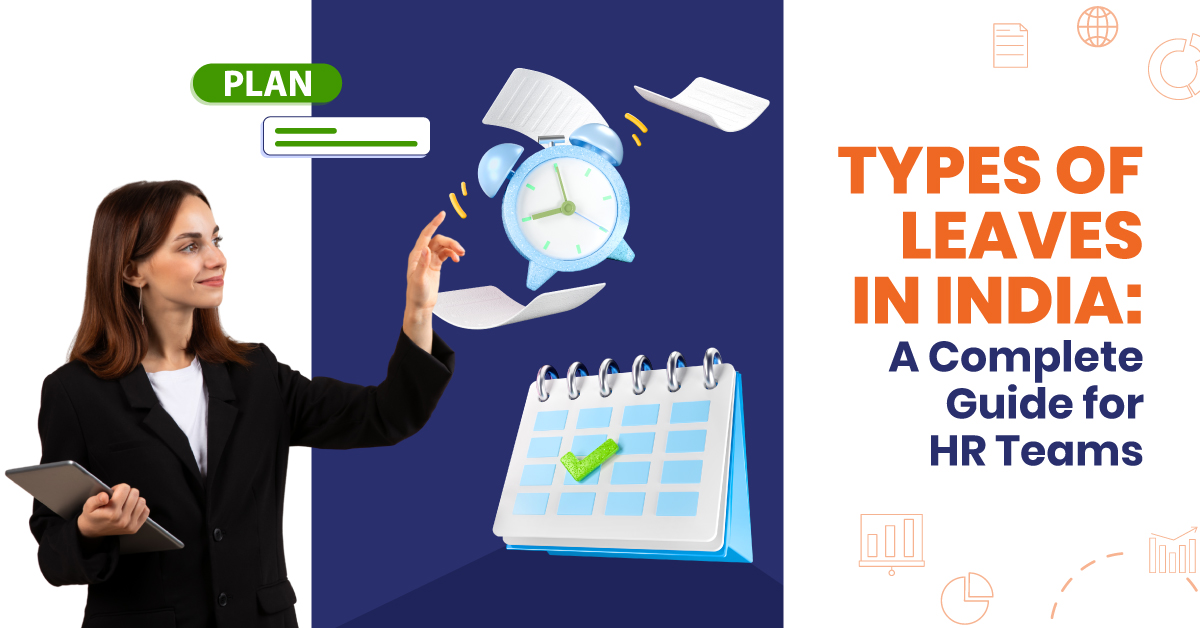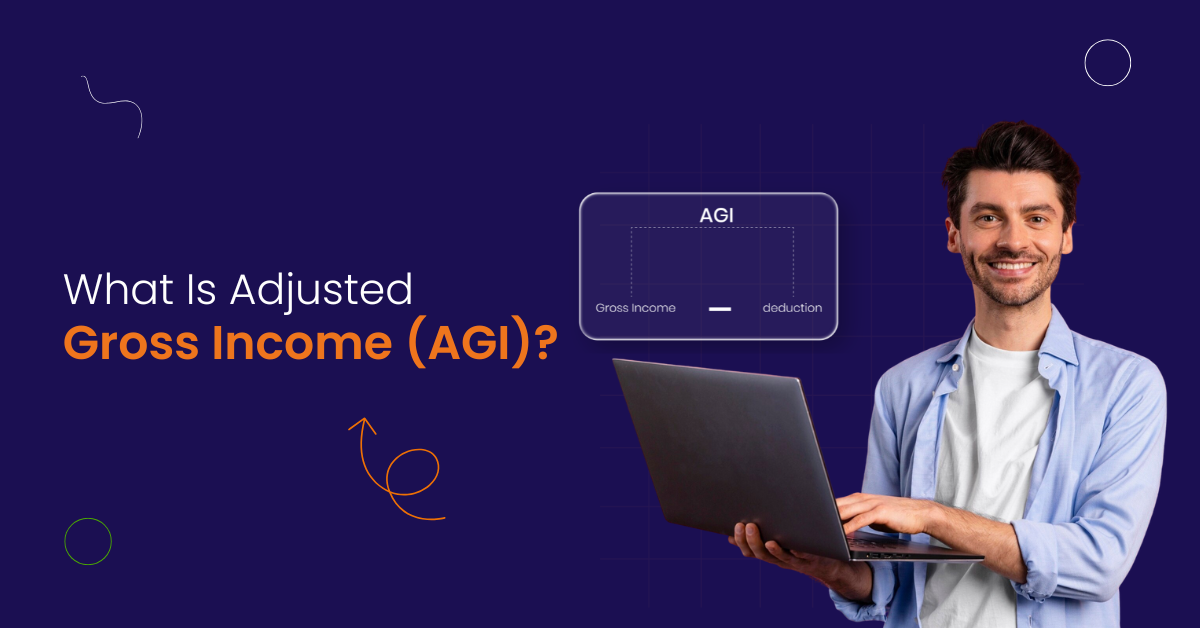Understanding Types of Leaves in India for HRMS and Payroll Compliance
Employee leave might seem simple in HR management until it affects your payroll, compliance, or team morale. Whether you’re running a small business or managing hundreds of employees, a clear leave structure keeps things fair, legal, and efficient.
That’s why an efficient HRMS and payroll software should be
- Fully compliant with Indian labour laws
- Customisable to match your internal policies
- Real-time with live balances and instantupdates
- AI-enabled, so approvals and workflows happen without delays
The result? No guesswork. No missed entries. Just smooth, transparent leave handling—from casual days off to extended maternity breaks.
Types of Paid Leaves in India Every HR Team Should Know
1. Casual Leave in India
Casual leave is provided for unforeseen events or personal reasons. Typically, Indian companies offer 12 to 15 days of casual leave per year. In Bharat Payroll’s HRMS:
- You can pre-set the casual leave balance for each employee type.
- Leave approval workflows help managers process casual leave quickly.
- Unused casual leave often lapses at year-end, encouraging its timely usage.
This leave type is particularly useful for short, unexpected personal commitments like urgent errands or one-day family events.
2. Sick Leave in India
Sick leave allows employees to recover from illness without risking pay cuts. The general entitlement is 12 days annually, though state-specific rules may apply.
With Bharat Payroll:
- Employees can upload medical certificates directly to the portal.
- Sick leave auto-triggers salary protection once approved.
- Managers can review absence trends via monthly reports.
Proper tracking ensures that only genuine medical leave gets compensated, reducing misuse while supporting genuine needs.
3. Maternity Leave in India
According to the Maternity Benefit Act, female employees are entitled to 26 weeks of maternity leave for their first two children. Bharat Payroll automates:
- Eligibility validation (minimum 160 days of service)
- Timeline tracking (8 weeks pre-delivery and 18 weeks post-delivery)
- Optional extensions like unpaid leave or work-from-home options
This HRMS feature promotes inclusive workplace policies while maintaining compliance.
4. Paternity Leave in India
Although not legally mandated for private sector employees, many progressive companies offer 5 to 15 days of paternity leave. In Bharat Payroll:
- Custom leave types like “Paternity Leave” can be created.
- Document uploads, such as birth certificates, are supported.
- Leaves can be mapped to payroll deduction or preservation logic.
Providing this leave reflects a modern, employee-centric approach, enhancing workplace culture.
Earned, Privilege, and Long-Term Leave Types
1. Earned Leave or Privilege Leave
Earned leave ( often called privilege leave) accumulates monthly as employees complete working days; usually 1 day for every 20 days worked. Most companies allow carry-forward and encashment of these leaves.
It helps:
- Set accrual cycles and caps
- Automate carry-forward and encashment logic
- Align leave usage with shift calendars and performance records
This is one of the most utilised leave types, particularly for planned vacations and extended time off.
2. Marriage Leave
Granted, typically for an employee’s first marriage, this leave ranges from 3 to 15 days based on company policy. In Bharat Payroll:
- Custom policies allow you to define leave length
- Documentation, like wedding invitations, can be submitted digitally
- Marriage leave status gets reflected in the consolidated leave report
Ensuring this leave type is available builds goodwill among younger employees and aligns with cultural expectations.
Long-Term and Special Leave Types in India
1. Bereavement Leave
Bereavement leave ( or compassionate leave ) is granted during the loss of a close family member. While not mandated by Indian law, companies typically provide this for 3 to 7 days.
Using Bharat Payroll:
- HR can define custom “Bereavement Leave” policies.
- Managers can track approval status and remarks centrally.
- Leave doesn’t deduct from other balances unless configured to.
This supports emotional well-being and builds a compassionate workplace environment.
2. Sabbatical Leave
Sabbatical leave is a long-term break offered to employees for personal development, rest, or study. Although not mandatory, it’s a strategic retention tool for senior talent.
In Bharat Payroll’s leave module:
- HR teams can define eligibility rules (e.g. 5+ years of service).
- Unpaid or partially paid sabbatical options are configurable.
- Tenure tracking and rejoining processes are automated.
This helps organisations balance continuity with career flexibility.
3. Loss of Pay Leave (LOP)
When an employee exhausts all paid leave, any additional time off becomes Loss of Pay leave. This is automatically linked to payroll deductions.
Bharat Payroll simplifies LOP by:
- Auto-detecting leave balance shortfalls
- Calculating proportional salary deduction
- Flagging frequent LOP cases in employee performance reports
This ensures full visibility across HR and finance departments, minimizing disputes.
Additional Leave Categories Every HR Should Configure
1. Study Leave
Study leave supports employees pursuing higher education or certifications relevant to their role. Duration may vary from a few months to two years and often requires a service bond.
In Bharat Payroll:
- You can define leave as paid, unpaid, or conditional
- Bond agreements can be uploaded to employee profiles
- Leave usage history is preserved for appraisal cycles
This investment in upskilling often yields long-term loyalty and productivity.
2. Compensatory Leave
Compensatory overtime ( CompOff ) is granted when employees work on holidays or beyond office hours. Rather than extra pay, they receive time off.
With Bharat Payroll:
- Holiday work logs automatically generate comp-off credits
- Employees can apply, and managers can approve through ESS (Employee Self-Service)
- Leave balances expire if unused within the policy window
This system ensures fairness without the complexity of manual calculations.
3. Childcare Leave
Increasingly adopted by modern Indian companies, childcare leave allows employees, often mothers but also fathers or guardians, to care for young children.
Bharat Payroll offers:
- Gender-neutral configurations
- Extension of maternity or paternity leave workflows
- Calendar alignment to school years or special needs requirements
Supporting working parents improves retention and workplace satisfaction.
Regional and National Holiday Integration in Leave Management
1. Public Holidays
Indian companies must observe at least three national holidays: Republic Day, Independence Day, and Gandhi Jayanti. Additional holidays vary by region and industry.
In Bharat Payroll:
- HR can upload the official holiday calendar
- Optional holidays, regional holidays, and restricted days can be tagged
- Holiday clashes with scheduled shifts trigger alerts for planning
This prevents scheduling conflicts and ensures payroll isn’t affected by unplanned absences.
2. State-Specific Leaves in India
State-specific leaves are critical for compliance, from Pongal in Tamil Nadu to Onam in Kerala. Employers must configure their leave system to reflect these regional nuances.
Bharat Payroll enables:
- Location-based leave rules
- Department-wise holiday allocation
- Accurate leave report generation for labour audits
Flexible Leave Arrangements with Modern HR Strategies
Modern companies in India now support flexible work arrangements and mental wellness days as part of their leave policies. This promotes employee well-being and reduces burnout.
With Bharat Payroll’s HRMS:
- HR can define custom leave types like “Mental Health Day” or “Flexi Leave”
- Absences are auto-synced with timesheets and payroll
- Leave trends are visualised in the dynamic report dashboard
These features make it easy to align leave policies with evolving employee expectations without affecting operational continuity.
Why You Need a Leave Management System
Manual leave tracking can lead to errors, delays, and non-compliance with Indian laws. A reliable leave management system is critical for payroll accuracy and HR transparency.
Benefits of Using Bharat Payroll for Leave Management
Bharat Payroll delivers clear, actionable insights across departments by integrating leave and attendance with payroll under one unified platform. It offers several benefits like-
- Instant Leave Requests– Employees can apply for leave, and managers approve in real time.
- Smart Policy Setup– Configure leave policies/rules by role, region, or tenure of employment.
- Auto Payroll Sync– Approved leaves reflect directly in salary processing.
- Built-in Compliance– Manages holidays and regional leave laws automatically.
Summary: Simplify Every Type of Leave in India with Bharat Payroll
Having a transparent, compliant, and automated leave system is essential if you’re managing numerous leaves, like casual leave, sick leave, or maternity leave. With Bharat Payroll, organisations gain:
- Compliance with Indian labour laws across all leave types
- Employee empowerment through self-service and real-time visibility
- Easy payroll processing with auto leave tracking
- Forecasting to predict leave trends and optimise resources
For HR and payroll teams across India, managing leave shouldn’t be manual, inconsistent, or reactive. It should be seamless, compliant, and built for scale and that’s exactly what Bharat Payroll delivers.
Ensure compliance, empower your HR teams, and give your employees full visibility with our intelligent, AI-driven platform offered by Bharat Payroll.
Frequently Asked Questions
1. How many days of casual leave are typically provided in India?
Most companies provide 12 to 15 days of casual leave annually, depending on the organisation’s internal policy.
2. What is the eligibility criterion for maternity leave in India?
A female employee must have worked at least 160 days in the 12 months preceding her expected delivery date to be eligible.
3. How does compensatory leave work?
Compensatory leave is granted when employees work on holidays or weekends. The leave must be availed within a specific window as defined by the organisation.
4. What is the difference between Loss of Pay leave and unpaid leave?
“Loss of Pay” leave occurs when the paid leave balance is exhausted, resulting in a salary deduction. Unpaid leave is typically pre-approved and not linked to salary encashment rules.
5. Are employers required to provide sabbatical leave?
Sabbatical leave is not mandatory under Indian law. However, many companies offer it as a discretionary benefit after a certain tenure.






